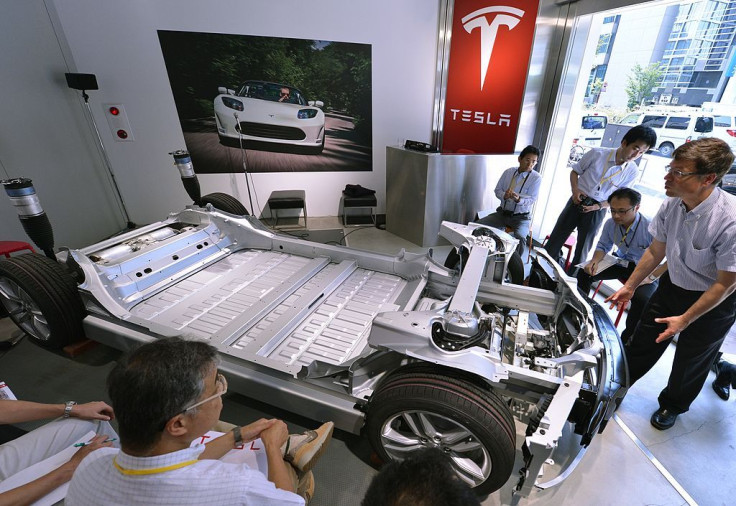Tesla Battery Day 2020: Elon Musk Teases 'Very Insane' Tech Unveil At Event
KEY POINTS
- Elon Musk sent the tech world abuzz about Tuesday's upcoming Tesla Battery Day
- At least two new Tesla Roadrunner battery cells are expected to make their first public appearances
- New cells promise big reduction in battery production costs, which could lower the price of future Tesla EVs
Tesla CEO Elon Musk put a charge of hype into the Sept. 22 Tesla Battery Day event, promising "very insane" tech at Tuesday's big reveal.
On Thursday, Musk made the cryptic and curt tweet, "It will be very insane," lighting up Twitter once again with hundreds of comments from his fans.
Musk was referencing Tesla's multimillion-dollar push to build its own battery cells and in-house designed battery cell manufacturing system to increase the production volume of its electric vehicles (EVs) while also slashing costs.
The buzz is Tesla plans to unveil at least two of its new Roadrunner battery cells during the live-streamed Battery Day event.
Tesla's secret “Roadrunner” project is taking place at Tesla's “Tera battery manufacturing facility” next to its Tesla Fremont Factory in California that manufactures the Model S, Model X, Model 3 and Model Y.
Battery cells for Tesla's EVs are currently being made by Japan's Panasonic Corporation. Panasonic is the exclusive supplier of 2170 cells for the Model 3. It also builds batteries for the Model S and Model X.
Electrek on Thursday said "someone" has sent it two pictures of a battery cell, claiming these were Tesla’s new in-house cell. It later said an independent source confirmed these images were the real deal and the cells were produced by the Roadrunner system.
The images reveal a tabless cell, which is something Tesla is known to be working on. Earlier this year, Tesla took out a patent for a new battery cell with a tabless electrode Musk claimed was “way more important than it sounds.” The lack of a tab cuts cost and simplifies manufacturing.
Tech pundits pointed out the diameter of the batteries in the images are twice that of Tesla’s 2170 cells currently used in Model 3s and Model Ys produced by Panasonic at Gigafactory Nevada.
They said doubling the diameter of a battery cell results in four times the volume in the cell. Used efficiently, this larger volume will result in more capacity while reducing cost because fewer casings and fewer cells per pack will be used.
One expert believes Tesla’s Roadrunner cells will be built to a 54×98 form factor, which has 10 times the volume of a 2170 cell. Resorting to this larger cell means Tesla can produce battery packs that have an order of magnitude fewer cells than before.
The end result will be massive savings for Tesla, which will only use one-tenth the number of cans, electrolyte fills, and welds compared to the 2170.

© Copyright IBTimes 2024. All rights reserved.











